| Glossary of terms and abbreviations Newcomers to the field of hat collecting, may be confused by some of the words and abbreviations they encounter in hat descriptions on the Internet and in sales catalogs. The fact that the same type of hat often has three or four different names doesn’t make matters easier. At any rate, I’ve tried to help things out a bit by providing an explanation of some of the more common expressions and defining a number of hat styles. I’ve also included information about some of the better-known hat manufacturers. Please let me know if you think I’ve left out something important or have gotten my information mixed up. ADC |
||
| "Aide de camp," an assistant to a military leader, usually an
officer. Literally "camp assistant." Aigrette |
||
| Same as a plume, almost always featuring a spray of straight feathers,
very similar to a "hackle." Air rank |
||
| A general officer in an air force. See "general officer." Alkero |
||
| Albert Kempf, manufacturer of military uniforms, particularly for the
Swiss Army and the West German Navy. The company is based in Oedmiesbach, but I cannot
figure out where this might be. Some caps also read "Teunz," but I can’t
find that on the map either. Alpha |
 |
|
| Part of the international code lettering system: Alpha, Bravo, Charlie,
Delta, etc. Sometimes Class A and Class B uniforms are referred to as"Alpha" and
"Bravo" uniforms. The U.S. Coast Guard does this, for example. Ames Sword Co. |
||
| Based in Chicopee, Massachusetts, Ames is a major supplier of regalia
(fezes, plumed hats, uniforms) for fraternal orders—Shriners, Masons, etc. but
virtually no militaria as far as I know. Apex |
||
| Italian hat manufacturer from Ortona a Mare, which is in Central Italy on
the Adriatic coast. Quite a lot of Italian caps seem to come from here.
|
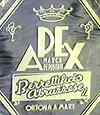 |
|
| Art Caps | ||
| A well-know New York manufacturer of military and unifom headgear.
|
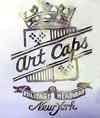 |
|
| Badge | ||
| Any metal or embroidered emblem located on the front-center of a visor cap, or on the
curtain of a garrison cap. Also called a "device." Not only are these insignia
used to indicate branch of service or specialty, in some cases—notably the British
Army—the color and construction of the hat badge is also used to indicate rank. In
many cases, higher ranking officers will have bullion rather than metal badges. Ball cap |
||
| Short for baseball cap. Balmoral |
||
| A round, flat cap with a top projecting all around, rather like an
oversized beret, but with a hat band, like a navy Donald Duck. A pompom (toorie) is
usually attached to the center of the crown. Used in the UK by some Scottish and Irish
regiments. Bamburger |
||
| A German manufacturer of military headgear. Most West German military
caps seems to come from their factory. Bancroft |
||
| A U.S. maker of very high quality military headgear. Founded in 1901, the
company was originally based in Framingham (Worcester), Massachusetts and is now located
in Cabot, Arkansas, where Bancroft built a new factory in 1967. The company also has
affiliates in Denmark, Holland, and Italy, which explains why foreign caps often bear the
Bancroft name. BAOR |
 |
|
| British Army of the Rhine. BDU |
||
| Battle Dress Uniform. Beak |
||
| Many collectors who don’t have English as their first language call
the visor a "beak." This is a reasonable approximation of "bill,"
which, in turn, is a more acceptable synonym for "visor." Bell crown |
||
| This is the hat-maker’s term for a visor hat featuring a cloth top
that is only slightly larger than the circle made by the hat band. Old-fashioned caps for
American firemen, policemen, and railroad functionaries often have this design. For
example, the stereotypical American train conductor’s cap has a bell crown. Lincoln Bennett & Co. |
 |
|
| Much-respected British uniform company from Old Bond Street in London.
|
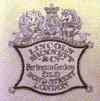 |
|
| Berkshire Hat Co. | ||
| New York manufacturer of high-quality uniform headgear. Many hats for
U.S. Marine Corps officers seem to come from this company.
|
 |
|
| Bernard Hat Co. | ||
| Hialeah (Miami), Florida-based hat manufacturer specializing in military,
security, and airlines. They also produce peaked caps for many Central and South American
countries. BEVO |
 |
|
| Although this designation is now applied to virtually all machine-woven
insignia for German uniforms from WWII, the name originally referred specifically to the
firm "Bandfabrik Ewald Vorsteher" in Wuppertal-Baren. These woven insignia are
most often seen on German field caps and overseas caps. Bezkozirka |
 |
|
| Russian term for the traditional "Donald Duck" style,
flat-topped navy cap. "Bird colonel" |
||
| Also referred to as a "full bird colonel," this slang
expression stems from the fact that colonels in the U.S. Army and Air Force have an eagle
to indicate their rank. A lieutenant colonel, on the other hand, has a silver oak leaf.
Therefore, a "bird colonel" represents the more senior rank. Boss |
||
| A coil of braid that forms the backing for a cockade or hat badge. Some
British regiments use a boss, as do older Austrian and Hungarian cap cockades. Today, most
bosses are cast in metal and not actually made of braid. Brail |
 |
|
| See hat band. Brigadier |
||
| A one-star general in most armies, although the British Army maintains the distinction
between a brigadier and a true general. Bullion |
||
| Many cap devices are found in both stamped or cast metal and embroidered
versions. The embroidered ones are referred to as "bullion" to indicate that
they are made from metallic thread. |
 |
|
| Busby | ||
| A tall, full-dress military hat, usually of fur. May have a pendant bag hanging down
on one side in regimental colors. Frequently seen with a plume of some kind. Camo |
||
| Short for camoflage. Campaign hat |
||
| A campaign hat features a wide, flat brim and is usually olive drab in color. Both the
Army and Marine Corps have used this hat at various times, in addition to the U.S.
National Forest Service, the National Park Service, the U.S. Boy Scouts, and some state
troupers. Drill instructors in the U.S. armed forces still favor this design. Cap insignia |
||
| This is sometimes used to decribe a cap badge, but strictly speaking refers to all
removable items attached to the hat frame including side buttons, chinstrap, badge and
occasionally the hat band. Caubeen |
||
| A traditional Irish hat that resembles an oversized beret, but with a cap band like a
navy "Donald Duck." Similar, if not identical to a Balmoral. The badge is worn
over the left ear and may be accompanied by a hackle. A pompom may also be present. Cellon |
||
| Some gold-toned embroidered hat insignia—particularly for the German armed forces
during WWII—use a cellulose-acetate material instead of metallic thread. Badges and
cap cords in "cellon" retain their color better than metal, which tends to
tarnish. Chapka |
||
| A cap design favored by the Polish army, resembling a kepi, but with a square
crown—tilted down toward the wearer’s right ear. There are a variety of
spellings for this word, for example "tshapka." Comes from the Russian word for
"cap." Chinstrap / chincord |
 |
|
| The chinstrap (or chincord) is the piece of leather or braid that runs across the
visor from buttons located on either side of the cap. In practice, chinstraps are almost
never used—in fact, many of them are strictly for decoration and cannot be adjusted.
Today, the main function of a chinstrap is to indicate rank. For example, most enlisted
men and NCOs have plain leather or vinyl chinstraps, whereas most officers have chinstraps
in a metallic material—band or braid. In some countries such as Italy, special loops
around the strap indicate specific rank. Class A uniform |
||
| The U.S. Army, for example, uses this term to denote the standard green uniform
consisting of shirt, tie, tunic, and pants—plus a service cap (with visor) or
garrison cap. The Class B uniform is essentially the same, but without the tunic.
Sometimes referred to as "alpha" and "bravo" uniforms, particularly in
the U.S. Coast Guard. CO |
||
| Commanding officer. Cockade |
||
| This refers to any round or oval device which contains the national colors, usually in
a "bull's eye" design. The term originated from a bundle of pleated ribbons
which roughly resembled a cock’s comb, which came into military fashion in the
mid-1700’s. Many Central and Northern European armies still use this device on their
headgear. Occasionally, the cockade is surrounded by a wreath, as is the case on many
German caps from the Second World War. Sometimes called a "kokarde," which is
the German-language equivalent. Also occasionally called a "rosette." In
Imperial German times, each individual state, plus some of the free cities, had their own
cockade to go with the national cockade. Click here
to read about the various color combinations. Cocked hat |
 |
|
| Sometimes called a "fore-and-aft" hat, although this term is probably
incorrect, the cocked hat was favored by naval officers up until about the time of WWII
for very formal wear (always with epaulets). According to one source, the cocked hat got
its name from the fact that in earlier times, these hats were frequently decorated with a
cockade and/or cock (rooster) feathers. Commissioned officer |
||
| Although strictly speaking, receiving a commission means that a soldier now holds
officer rank, some navies use the term to refer to a rank equivalent to that of a
field-grade officer in the army. Company-grade officer |
||
| Generally used to indicate army/air force officers up to and including the rank of
captain. J. Compton Sons & Webb |
||
| A well-known London maker of high-quality military headgear. Cord |
||
| See "piping" CPO |
||
| Chief Petty Officer. Crown |
||
| The top cover of a visor cap. For that matter, the top of any hat. Crowns |
||
| Many countries with a reigning monarch incorporate a crown in the hat badge design or
on the side buttons. In Great Britain, the Victorian Crown was used up until 1901,
afterwhich it was replaced by the Imperial Crown. In 1952, when Elizabeth II ascended the
throne, the St. Edward’s Crown, designed in 1661 was adopted. Both the Victorian and
St. Edward’s Crown are very similar and feature a dimple in the top, whereas the
Imperial Crown has a rounded top. This is good to know if you’re trying to date a
particular British or Commonwealth badge or button. The Italian "mural" crown is
worth mentioning, too, since it is not really a regal crown but depicts a small fortress
with three towers. Spain also has two crowns, the Imperial crown, which has five points
(alternating green and red). This was used throughout the Franco era. After the
reinstatement of King Juan Carlos, the Royal crown was readopted, which features a rounded
top (green band, red top) with a tiny cross. Crusher cap |
||
| This expression usually refers to German Army and SS visor caps from which the
springing has been removed, along with side buttons and the chinstrap—although
sometimes chinstraps were sometimes added by the wearer, contrary to regulations. The cap
could thus be easily tucked away in a backpack when wearing a helmet, which made it
practical in the field. The design is similar to the so-called "Old-style field
service cap." Incidentally, although most army crushers have bullion or BEVO
insignia, SS crushers frequently retain their metal insignia. Curtain |
||
| This refers to either of the folded up sides of a garrison cap. For example, a uniform
code might specify "insignia is to be worn on the left curtain." Cipher |
||
| A royal (usually) monogram made by intertwining initials, such as G.R. for
"George Rex" (George the King). Spelled "cypher" in the UK. Device |
||
| See "badge." DI |
||
| Drill instructor. Diced |
||
| A checkerboard pattern in which the individual squares are quite small—often
about half an inch (1cm) across. Often seen on Scottish glengarries. Doeskin |
 |
|
| Actually a very soft fur felt (wool), often used to describe the material used to make
high-quality WWII German headgear. Donald Duck |
||
| A sailor’s cap with a flat top, a longish ribbon, and no visor—similar in
shape to the one worn by—guess who. Donut |
||
| A thick rubber ring or stiff tube of woven plastic thread that both pads
out and stiffens the crown of U.S. service caps. |
 |
|
| DPM | ||
| Disruptive Pattern Material—a British Army term for camoflage cloth. Dress blues |
||
| The formal U.S. military uniforms, generally used for honor guard duties and at state
dinners, funerals, graduation ceremonies and on similar occasions. Dress whites, apart
from Navy personnel in summer, are virtually only used in tropical climates. Duty cap |
||
| A fairly soft, baseball-type cap, though it is also found with a squared-off top
rather like a kepi. Very informal headgear. Sometimes called a "utility cap." EGA |
||
| Collector shorthand for "eagle, globe, anchor," the symbol of the Marine Corps. |  |
|
| Eight-point | ||
| The traditional U.S. police/security cap design featuring eight points
around the edge of the crown. |
 |
|
| EM | ||
| Enlisted man. Erel |
||
| A famous maker of German visor hats during WWII. Erel products are much
prized by collectors for their high quality materials and workmanship. Erel
"Sonderklasse" (special class) hats are of the very highest quality.
|
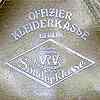 |
|
| Fart-and-dart | ||
| A common slang expression referring to the cloud and dart decorations found on the
visors of high-ranking U.S. Air Force officer's caps. Fatigues |
 |
|
| Informal work uniforms, often worn with a utility cap of some kind. Field cap |
||
| Usually refers to any soft cap with a soft cloth visor, but is sometimes incorrectly
used to refer to a garrison cap. Also called a forage cap in some countries. Field-grade officer |
||
| Generally an officer with the rank of Major, Lt. Colonel, or Colonel. In many modern
armies, field-grade officers have special visor decorations—"scrambled
eggs." Fifty-mission crush |
||
| During WWII, Air Force officers removed the springing from their service caps, which
allowed them to wear headphones over them. As a result, the sides of the cap were
eventually flattened down, giving rise to the expression "50 mission crush."
Rumor has it that many a young officer bound his hat with string and steamed it over a
tea-kettle to give the cap the proper battle-worn appearance. Flag officer |
||
| A naval officer with the rank of rear-admiral and up. Navy equivalent of general
officer. Flight Ace |
||
| A well-know U.S. manufacturer of military headgear, particularly for Air Force personnel. Located in San Antonio, Texas, which had no fewer than seven air-force bases back in the mid-fifties. |  |
|
| Forage cap | ||
| Today, this term usually refers to a field cap with a cloth visor, but
during the American civil war, the term was also applied to soft, floppy kepis. Some
collectors of Commonwealth hats call peaked service caps "forage caps," too. The
Danes often refer to garrison caps as "forage caps." Confused? So am I! The
lesson to be learned is this: if someone offers you a forage cap, sight unseen, get a more
detailed description! Fore-and-aft |
||
| Many collectors use this term to denote very formal naval hats, but the term is also
sometimes applied to garrison and field caps that have curtains that can be unbuttoned and
folded down to protect the neck and ears. Other collectors use this to refer to garrison
caps that are identically shaped at the front and back. Foul anchor |
||
| A traditional symbol of the navy—almost everybody’s navy. The
anchor has large flukes and a chain or rope snaking around the main shank.
|
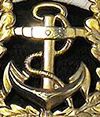 |
|
| Frame | ||
| The constructional base of a visor hat, minus any buttons, insignia and
cloth top. The visor is sewn to the frame, but is not strictly considered part of it. Furazhka |
 |
|
| The Russian term for peaked cap. Fur felt |
||
| Cloth with a slight nap made from beaver or rabbit skin. Usually seen on officer-grade
hats. Garance |
||
| A special red color derived from the root of the madder plant.
Chosen by the French Army for use on uniforms back in the 1880s with the principal aim of
boosting the economy of the French dye industry. Used extensively on pants and kepis up
until about 1915. Garrison cap |
||
| An informal cap that can be folded flat. It may or may not have a badge.
Also called an overseas cap as well as an obscene slang term likening this design to
female genitalia. |
 |
|
| General officer | ||
| An army general from the rank of brigadier and up. |
||
| Glengarry | ||
| A Scottish garrison-type cap, characterized by a tall front, tapering
down to a point at the rear with a pompom at the top. The body of the cap is often in a
regimental color or a diced pattern. A black ribbon encircles the cap and trails from the
rear much like a navy tally. Hackle |
 |
|
| A plume made of feathers that somewhat resembles an old-fashioned feather duster. Worn
with, or in place of, the cap badge, particularly on British and Commonwealth shakos and
caubeens. Half-colonel |
||
| A Commonwealth slang expression for a lieutenant colonel. Hallmark |
||
| A discreet marking on the back of a metal object to indicate who made the item in
question and sometimes the quality of the material (sterling silver, for example). The
German RZM mark is a kind of hallmark. Hat band |
||
| Although this is sometimes incorrectly used to indicate the sweatband, it
more commonly means the band of cloth or webbing running around the outside base of the
cap. Also called "brail" in the hat business. Can also refer to a pugaree. HBT |
||
| Herring-bone twill. A type of cloth featuring a
"ribbed" weave. Heer |
||
| German for "army." Hoffmann & Søn |
||
| One of the few remaining Danish uniform manufacturers. Hoffmann specializes in
industrial uniforms for cooks and waiters, plus the Danish police and merchant marine. Holters |
||
| Holters was a major Berlin supplier of uniforms prior to WWII. Perhaps it
is best remembered today (by hat collectors at any rate), as the company that supplied
Hitler's hats. |
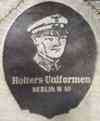 |
|
| Carl Isken | ||
| Uniform maker from Cologne, Germany. Has supplied the military, police
and civil servants with headgear since the 30s.
|
 |
|
| Jeep cap | ||
| A knitted cold-weather cap—much like the one "Radar" wore in the
television series, M*A*S*H. Herbert Johnson |
||
| London maker of high-quality uniforms in New Bond Street—the
location of several leading uniform companies. Junior officer |
||
| Often used in the navy to indicate a company-grade officer. KC |
||
| "King’s Crown," the crown used on all British and
Commonwealth hat badges from 1901 to 1952. Depicts the Imperial Crown. See
"crown" for details.
|
 |
|
| Kepi | ||
| A military visor cap with a round, flat top, often sloping down toward
the front—a French design from the early 19th century. "Coffee can" type
kepis such as the more formal SA types, do not slope down and are cylindrical, as are most
of the French models from this century. KGB |
 |
|
| "Komitet Gosudarstvennoi Bezopasnosti," the Soviet state security agency.
Originally part of the NKVD, in 1946 it was transferred to the newly formed MVD. In 1954,
following Beria’s trial and execution, it was separated from the enormous MVD
organization and received a new name, the KGB. Khaki |
||
| When British Army officers discovered that their white tropical uniforms
made them good targets for snipers in India, they adopted a more practical and less
dangerous light-brown color, which they called "khaki," the Urdu word for
"dust." The color was officially adopted in 1908. Kokarde |
||
| German for "cockade." See this entry for details. Lancaster Hat Co. |
||
| "The largest supplier of uniform headgear west of the
Mississippi" if we're to believe the company's PR material. They also claim to be the
preferred choice of U.S. Marine Corps generals and the official cap of the Los Angeles
Police Department! |
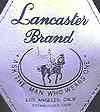 |
|
| Lemon squeezer | ||
| A slang expression in Australia/New Zealand for a
campaign hat. Here’s a picture of a real lemon squeezer if you don’t know what
one looks like.
|
 |
|
| Morry Luxenburg | ||
| Morry Luxenburg was the premier uniform maker in New York City during
WWII and his cap badges for Army officers are particularly prized by collectors because of
the exceptionally fine workmanship. During the war, the company also set up an outlet in
London. These badges are marked "Made in England." M43 |
||
| This is an example of how the military indicates model years. In this case, it would
be 1943 and M43 is often seen to describe a common German field cap from WWII. In the
United States, however, the full year is often written out. Thus, a U.S. Army
officer’s M1910 cap would refer to something of WWI vintage. Modus |
||
| Polish manufacturer of military headgear. Many Modus caps are dated underneath the
sweatband. Note: the final "s" in "Modus" looks like an "e." Montana peak |
||
| Can be used to refer to either a wide-brimmed campaign hat, or to the
characteristic crown of this hat with its four pinched-in corners.
|
 |
|
| Moretto | ||
| The characteristic wide-brimmed, cock-feathered headgear of the
Bersaglieri Corps—an Italian rifle corps formed in 1838. All ranks use this hat on
dress occasions. Enlisted men have 300 feathers, NCOs have 500, and officers have 680. MP |
||
| Military Police. Mütze |
||
| German for cap. Usually this refers to visor-less headgear. MVD |
||
| "Ministerstvo Vnutrennykh Del," the Soviet Ministry of Internal Affairs,
which ran the infamous "gulag" system of correctional camps and militia (regular
police) from 1946-1962 and again after 1968. The MVD also administers firefighting
services. For a short time in the mid-fifties, prior to the creation of the KGB, the MVD
was also responsible for state security. NATO |
||
| North Altantic Treaty Organization—the Western European equivalent of the Warsaw
Pact. NCO |
||
| Non-commissioned officer. Usually refers to a sergeant, petty officer, or warrant
officer, although corporals are also included in some armies—the Danish, for example. NKVD |
||
| "Narodnii Kommissariat Gosudarstvennoi Bezopasnosti," the Soviet Russian
People's Commissariat of Internal Affairs, which was created in 1918 and controlled the
militia (police/fire), internal troops, and prison guards. In 1946, the NKVD became the
MVD. Number 1 dress |
||
| Dress "blues" in the UK, now largely replaced by khaki No. 2 dress for all
but the most formal ceremonial occasions. OD |
||
| The color "olive drab." Officer-grade |
||
| This adjective can be used to indicate that a hat is for an officer, but more
commonly, it means that the cap is of higher quality in terms of material and construction
than an equivalent hat for an enlisted man. Old-style field service cap |
||
| This is a German Army cap style from the late 30’s, similar to a
"crusher," although springing may be present. These caps almost always have
bullion or woven (BEVO) insignia. OR |
||
| "Other ranks" Often used in UK and Commonwealth countries to indicate
enlisted men. OS |
||
| Overseas. Other ranks |
||
| All service personnel other than officers. Overseas cap |
||
| Same as a garrison cap. Pak-Cap |
||
| A patented hinged device found on newer Bancroft hats that permits the
crown of a visor cap to be folded flat for packing. An updated version of an old Compton's
feature from back in the 40s.
|
 |
|
| Papakha | ||
| A tall cylindrical hat, usually made of lamb’s wool, worn by Soviet generals for
winter use instead of a visored cap. Parade cap |
||
| Often refers to a better quality cap for use on formal occasions. For example, in
British and Commonwealth countries, a normal army service cap is often green or olive
drab, whereas a parade cap will often have a colored crown and contrasting piping and/or
hat band. Peak |
||
| Although this is usually used to refer to the top front of a visor cap (as in
"high peak"), strictly speaking, it means the presence of a visor in the
hat’s construction. Peaked cap |
||
| A visored cap. U.S. and Canadian military personnel call these "service
caps." Peakmount |
||
| Metal trim along the rim of a visor, often seen on caps for the UK Household Guards
regiments and other more formal peaked caps.
|
 |
|
| Peküro | ||
| Peter Küpper of Ronsdorf, a well-known manufacturer of WWII German
headgear. Ronsdorf is not far from Koblenz. Pershing |
||
| The U.S. general, John J. Pershing, who led the American Expeditionary Force during
WWI, gave his name to this type of cap, which features a basket-weave-type ventilated
frame with a flat, round crown. The service caps for modern American military officers are
known in the hat trade as "modified Pershings" because they feature a solid
frame. PHP |
 |
|
| Pennsylvania Highway Patrol. Visor caps from this organization lack springing and are
thus fairly flat and floppy—apart from some stiffening in the peak. This particular
style has since been adopted by many other law enforcement agencies in the United States
and has thus become something of a generic term, like bell-crown, pershing, and
eight-point. Phuoc Hung |
 |
|
| One of the largest and best-known military tailors in Saigon prior to 1975. Pillbox |
||
| A visor-less cylindrical cap—that looks like a box for pills. Can be either stiff
or soft. Usually looks like a modern French kepi, but without the visor. Bellhops in
hotels used to wear these. Pioneer |
||
| A military construction engineer. Piping |
||
| The thin bead of cloth running around the top edge of a cap and occasionally on either
side of the hat band, too. In many countries, notably Germany, this indicates the
specialty or duty of the wearer within a specific service branch. For example, in the
German army, "cornflower blue" piping indicated that the wearer was a member of
the medical corps. On U.S. garrison caps, piping is often called "cord." Some
U.K. regiments refer to piping as "welts." Plume |
 |
|
| A feather or horse-hair decoration that sticks up from a dress military cap such as a
shako, busby, or kepi. PO |
||
| Petty officer. Pompom |
||
| A small ball of wool, usually attached to the top of a Tam-O-Shanter, Glengarry,
Balmoral, etc. Also called a "toorie," and NOT to be confused with a
"tuft," which is something quite different. Can be seen on the top of French
navy "Donald Duck" caps, too. Pork pie |
||
| A slang expression for a hat with a flat crown. Civilian pork-pies have a short brim,
military pork-pies are identical to navy "Donald Ducks." Puggaree |
||
| The thick, pleated hatband seen on pith helmets, Australian slouch hats, etc. Comes
from the Hindi "pagri" which means "turban." Originally, a puggaree
was a simple muslin scarf wrapped around a sun helmet. Also spelled "pugaree." QC |
||
| "Queen’s Crown," which refers to the crown seen on badges from the reign of Elizabeth II. It depicts the St. Edward’s Crown. See "crown" for more information. |  |
|
| Quarter-welt | ||
| Piping that is also runs along the vertical seams on a cap's crown. Some
British Lancers caps feature this striking decoration.
|
 |
|
| Quatrefoil | ||
| A stylized representation of a group of four leaves, or a leaf with four
leaflets. Generally made of cord and sewn onto the top of some military hats—most
notably French officers’ kepis and U.S. Marine Corps officers’ service and dress
caps. Redcap |
 |
|
| Originally, porters at train stations in the U.S. had red visor caps to distinguish
themselves from other railroad personnel. They were called "Redcaps," and the
same term is sometimes used for "Skycap" baggage carriers outside an airport
terminal, since they, too, often wear these traditional red caps. In the UK,
"redcaps" refer to military police, who also have distinctive red visored
headgear. Reenactor |
||
| Someone who recreates or "reenacts" an historical event—usually a
famous military battle. Reenactors take their hobby very seriously and reenactor caps are
often of very high quality. Ridgeway cap |
||
| A semi-stiff visored duty cap, similar to a kepi, favored by the American General
Matthew Ridgeway. This is collector slang, not an official designation. Rosette |
||
| Essentially the same as a cockade, although the Finns use this term to describe the
small rose that is used as a badge of rank. RZM |
||
| "Reichszeugmeisterei," an organization established on 1 April 1929 to
supervise the production and pricing of all Nazi Party uniform items. On 16 March 1935, a
system of contract numbers was introduced, which indicated the name of the manufacturer.
For example, "RZM M1/52" indicated Deschler & Sohn of Munich (Contractor
52). After the war started, the M1 prefix was dropped and the year of manufacture was
added. "RZM 237/43, would therefore indicate an article from contractor 237 made in
1943. Unfortunately, no list of wartime manufacturers and their contract numbers has
survived. At any rate, original SA and SS cap insignia will have an RZM number stamped or
cast into the metal. However, most good fakes do, too, so don’t be fooled. Click here for a list of several hundred RZM code
numbers. "Saddle" shape |
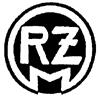 |
|
| Often used to indicate the presence of a high front peak on WWII German caps, but when
used more correctly, also suggests a rise at the back of the cap, giving the crown a shape
that resembles a horse saddle. "Salty" |
 |
|
| A collector’s term for a uniform item that is not in the best of shape.
Sometimes, its just a question of dirt, but more often it means that the item has seen a
lot of use and is worn and/or banged up. There may or may not be moth damage. Schirmmütze |
||
| German for "visor cap." "Scrambled eggs" |
||
| Slang term for metallic decorations (bullion or cast metal) on the visor itself. All
field-grade officers in the U.S. Army and Air Force have had them on their caps since the
mid-fifties, although General Douglas MacArthur already had impressive hat decorations
during WWII. Many other armies also adopted these decorations during the fifties. On the
other hand, high-ranking navy, coast guard, and merchant marine officers have had
"scrambled eggs" on their visors since the turn of the century, usually for
ship’s captains. The term should not to be confused with "fruit salad,"
which refers to decoration ribbons on the left front of a tunic or uniform shirt. Screw back |
 |
|
| Most U.S. military hat devices are attached with a "nut and bolt"
arrangement. These devices are said to have a "screw back" as opposed to a
pin/brooch clasp, eyelet/cotter pin, or slider arrangement. SD |
 |
|
| Short for "Service Dress," a designation for a particular class of uniforms
within the British Army. For example, stiff, olive-drab service caps from WWI were called
"SD" caps. German collectors will also recognize this as the abbreviation of the
"Sikkerheitsdienst," which was the police arm of the SS. Carl Seifert og Søn |
||
| The oldest and most respected of the Danish manufacturers of military uniforms. The
firm still exists, although their business today mostly comes from supplying Danish
graduation caps and uniforms for security guards. Service cap |
 |
|
| In the United States, this means a visor cap for use with the Class A uniform. Shako |
||
| A hard, helmet like hat made of leather or pressed felt. Although closely related to
the kepi, a shako conforms more closely to the shape of the head, rising up to a flat,
circular crown that is somewhat smaller than the circumference of the hat band. This style
was a favorite of many European regiments, generally for parade use, up until WWI and was
used by the German police until about 1952. The German spelling is "tschako." Slider |
||
| Also called "slide fitting." A flat metal spring soldered to the rear of
many British and Commonwealth cap badges. The slider makes it easy to slip off a badge and
attach a new one when a soldier’s duties or rank changes. Many British caps have a
tiny slot on the front of a visor cap just where the cap band meets the lower crown to
accept the slider. Slouch hat |
 |
|
| The characteristic wide-brimmed campaign hat worn by Australian troups. The left side
of the brim is folded up and sewn to the crown. The hat badge is attached to this upturned
brim. Smokey the Bear hat |
 |
|
| Smokey is a cartoon character who appears in advertisements from the U.S. National
Forest Service to encourage people to "stamp out forest fires." He wears a
traditional flat-brimmed campaign hat. Because some state troopers (highway patrol police
in the U.S.) also use this design, CB-radio enthusiasts have thus nicknamed the police
"smokies"—remember the film, "Smokey and the Bandit"? Sonderklasse |
 |
|
| An Erel expression for their "special class" headgear—higher quality
than usual. Erel had three classes: standard, "sonderklasse" and
"sonderklasse-ekstra"—this last representing an even higher grade.
Actually, there was also a fourth class, the "Ideal," but I'm not sure what it
represented since it is so rarely seen. Soutache |
||
| A narrow braid with a herringbone or V-shaped pattern used as trim, often seen on the
front of German overseas caps from WWII to show the wearer’s "waffenfarbe". SP |
||
| Shore Patrol. The Navy equivalent of military police (MP). Springing |
||
| Springing consists of a metal wire or band that is inserted inside a visor cap to keep
the crown stretched. Often, this band can be removed, which creates a floppier, but more
convenient cap. German U-boat captains and U.S. Army Air Corp fliers during WWII often did
this. Staff Corps |
||
| A British/Commonwealth term that refers to officers who have attained the rank of full
(substantive) colonel. Staybrite |
||
| A term used in the British military to refer to cap badges and insignia that are
specially made so that they do not require polishing. Sterling |
||
| A very pure grade of solid silver, as opposed to silver plate. Many high-quality U.S.
Navy cap devices are sterling silver. Always hallmarked. Stirndrückfrei |
||
| A phrase frequently seen in high-quality German military headgear from Erel. This
particular lightweight construction ensures that the hat doesn’t press down on the
forehead. Substantive colonel |
||
| A full colonel in the British Army. Sweatband |
||
| The sweatband is the piece of vinyl or leather that runs around the interior of the
cap to protect it from—well—sweat. Sweatshield |
||
| A sweatshield is any plastic or celluloid protector that is sewn to the
lining of the cap to protect the cloth top from sweat, hair oil, etc.. Also called a
"sweat diamond" due to the typical shape or a "protector." |
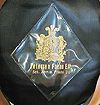 |
|
| Tally A tally is the removable ribbon that covers the hat band on naval caps for sailors. It usually has the name of the ship, e.g. "H.M.S. Ark Royal" or the name of the service, e.g. "Kriegsmarine" in gilt letters. For security reasons, tallies with ship names are usually removed in times of war. The Germans adopted generic tallies in 1940, the U.S. in 1942. Tam-O-Shanter |
||
| Another name for a Balmoral—traditional headgear of some Scottish regiments. Teller |
||
| The German word for "plate". Prior to 1936, German hats had a flat top,
resembling a dinner plate. These "teller" shaped caps were replaced by ones
featuring a "saddle" shape about 1935-6. The more recent East German military
and police hats also have a "teller" shape, which is handy to know if someone is
passing off a DDR cap as WWII issue. Theater-made |
 |
|
| Generally refers to any uniform item made in a local theater of operations rather than
purchased from the PX or supplied by the company quartermaster. Theater-made items often
feature minor design variations not seen in standard-issue uniforms and insignia. Tombak |
||
| Short for "tombakbronze," an alloy of zinc and copper, often used as the
base metal for the silver-washed pre-war German cap insignia. Toorie |
||
| Another word—Celtic, I believe—for a pom-pom. Seen on the top of Glengarries
and other types of Scottish and Irish headgear. Tracking |
 |
|
| The tracks left by moth larvae as they eat their way along the surface of a woollen
object. Usually about 1mm (1/16") wide. Trip |
||
| A thin band of metallic decoration, usually found on the visor to indicate a
particular grade of officer—often seen on the caps of junior officers in the German
Navy. Not, however, to be confused with the protective metal rim seen on edge of some
visors, which is called "peakmount." Tuft |
 |
|
| A small ball of wool, often in a regimental color, fastened to the front of the crown
of a shako or kepi. It may or may not conceal a plume holder. UKLF |
||
| United Kingdom Land Forces—the official designation for today’s British
Army. USAAF |
||
| United States Army Air Force. WWII forerunner of today’s Air Force. WWII U.S.
Army and Army Air Force uniforms were virtually identical, except for tunic badges. USAF |
||
| United States Air Force. Ushanka |
||
| A Russian name for woolen or fur winter headgear featuring fold-up
earflaps, which are tied at the top. |
 |
|
| USN | ||
| United States Navy. Utility cap |
||
| A very informal soft cap worn with military work clothes, usually with a
brim like a baseball cap. This term is of fairly recent vintage and seems to be used more
often by U.S. servicemen than by soldiers of other nations, who still use the term
"field cap." Vallejo |
||
| A well-known maker of military and police hats in Barcelona, Spain. Valle, S.A. |
||
| A major Spanish manufacturer of military headgear, located at Lopez de Hoyos, 135-4° A, in Madrid. |  |
|
| Vented cockade | ||
| This was an Erel hallmark, seen primarily on German "Heer" caps
in which the red center of the national cockade (in the center of the wreath) was made of
fine screening. A hole in the frame behind this "vented" cockade allowed fresh
air to get inside the cap, which presumably made it cooler to wear. |
 |
|
| Visor | ||
| The brim of a cap that serves to shade the eyes from the sun and keep
rain off the face. In the case of field caps, visors are almost always cloth-covered,
whereas visors on more formal caps are usually made of leather, patent leather, or
plastic. Waffenfarbe |
||
| This refers to the color of the piping on German hats showing the particular specialty
of the wearer—Panzer Pink, for example. Waffenfarbe (literally "arms
color") was also used on shoulder boards and occasionally on other parts of German
uniform tunics. For a key to Waffenfarbe meanings, click here. |
 |
|
| Walking-out dress | ||
| Roughly the equivalent of a U.S. Class A uniform but is also used to
describe Soviet uniforms of somewhat less grandeur than parade uniforms. Warsaw Pact |
||
| The military organization created by the Soviet Union ostensibly to protect Eastern
Europe from invasion from the West. Member states included: East Germany, Poland,
Czechoslovakia, Hungary, Rumania, Bulgaria, and the Soviet Union. Wehrmacht |
||
| Officially, "Wehrmacht" refers to any of the German armed forces during
WWII, but is more often used to specify the German Army (Heer) as opposed to the Luftwaffe
and Kriegsmarine. Both uses, however, are considered acceptable. Welch |
||
| An alternative spelling for "Welsh," referring to someone from Wales in the
United Kingdom. I mention this because some British cap badges are found with both
spelling variants. Welt |
||
| Same as piping. Quarter-welts refer to piping that also runs along the four vertical
seams on the crown. WO |
||
| Warrant officer. | ||